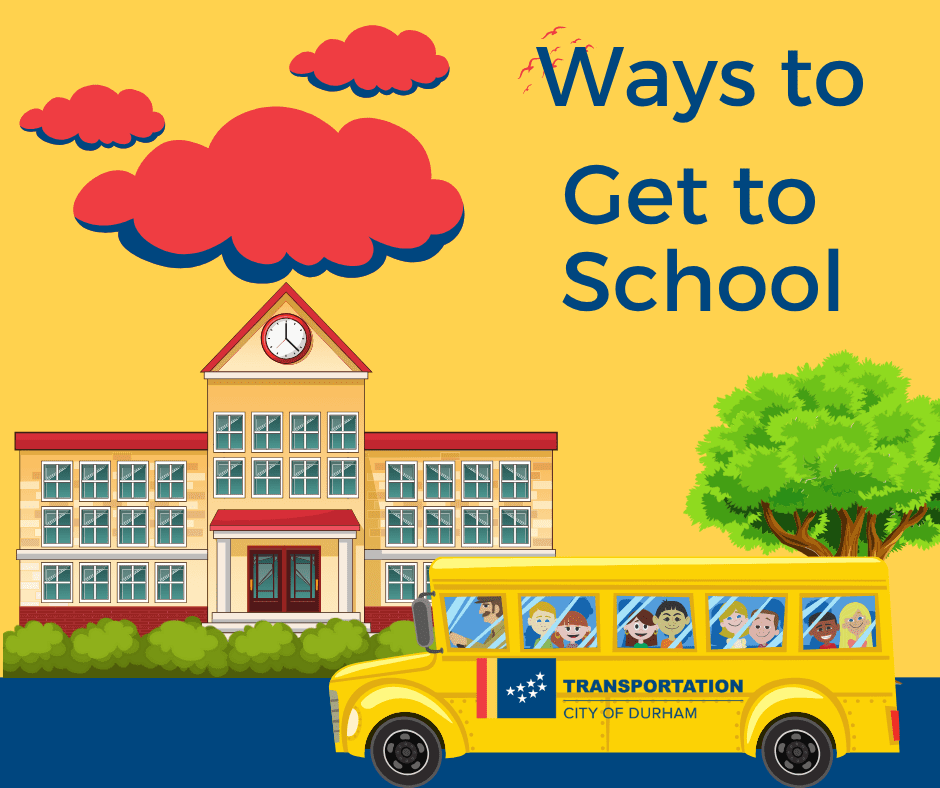Classes will be back in session for Durham students next month. The key to a great school year is to get started on the right foot. This article will use Durham Public School’s new family responsibility zones (for elementary students) and GoDurham Transit (for middle and high school students) to provide students and parents with resources to bring their children to school.
Family Responsibility Zones:
In response to Durham’s bus driver shortage, in January 2025, Durham Public Schools created Family Responsibility Zones for 21 elementary schools. These zones are known as walk zones, and because they are within a 1.5-mile radius of an elementary school, school bus services are not provided. In response to this, the Transportation Department collaborated with Durham Public Schools to create school travel maps. If this change impacts you and your student, here are some ways to make the most of your school commute.
Join Your Neighborhood’s Listserv to Develop a Joint Commute Plan:
By joining your neighborhood’s listserv, you can stay informed of what your community is doing for school commuting. On platforms like Nextdoor or Facebook Groups, you can connect with other parents in your neighborhood to develop a carpool crew or walking school bus.
Forming a carpool crew is a fun way to divide the ride between neighbors, friends, or teammates. As your students take on new extracurricular activities, spend time identifying neighbors or friends to create your carpool system.
A walking school bus is a supervised group of children walking to school together along the sidewalk, like a bus route but on foot. The concept works with parents taking turns walking children, or with structure including designated routes, meeting points, and adult supervisors. Using either a carpool or walking to school is an efficient way to balance the load of daily commuting while using the resources within your community.
Bike, Walk or Roll to School:
Another option for getting young scholars to the classroom is biking, walking, or rolling to school. The 21 schools in the Family Responsibility Zones are in areas deemed walkable and safe for biking, with reduced speeds, adequate sidewalks, and upgraded pedestrian crossings. Biking, walking, or rolling to school increases physical activity and provides excitement on their way to and from school. The Safe Routes to School Program (SRTS) is a resource that educates parents, students, faculty, and staff on how to get to school safely by biking, walking, or rolling. The organization hosts nationwide events in May and October to raise awareness of safe school travel modes. You can use the event tools to coordinate your own SRTS event at your student’s school.
Using GoDurham’s Fare Free Transit:
If your child is old enough to take GoDurham’s Transit, they can utilize the City’s fare-free bus to get to and from school. To plan their trip and identify routes, visit the GoDurham website. Students do not need a pass or ID because all Durham City buses are fare-free until June 2026.
Getting your child to school may look different this school year, but building your community and using transportation resources like the Safe Routes to School Program can ensure that unusual times are not a problem. Get ready to rock your school year safely, efficiently, and sustainably. Share this article with your carpool crew or walking school bus community.

